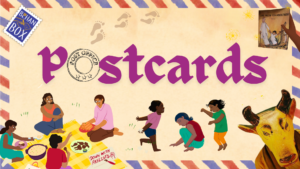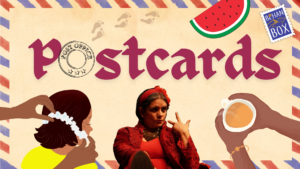Postcards: From Karl Marx in Dharavi to a Paper Factory in Nepal
This month in Postcards: notes about mangoes (and mango pickles), deadlift parties, Jyoti Hedge’s rudra veena, and more
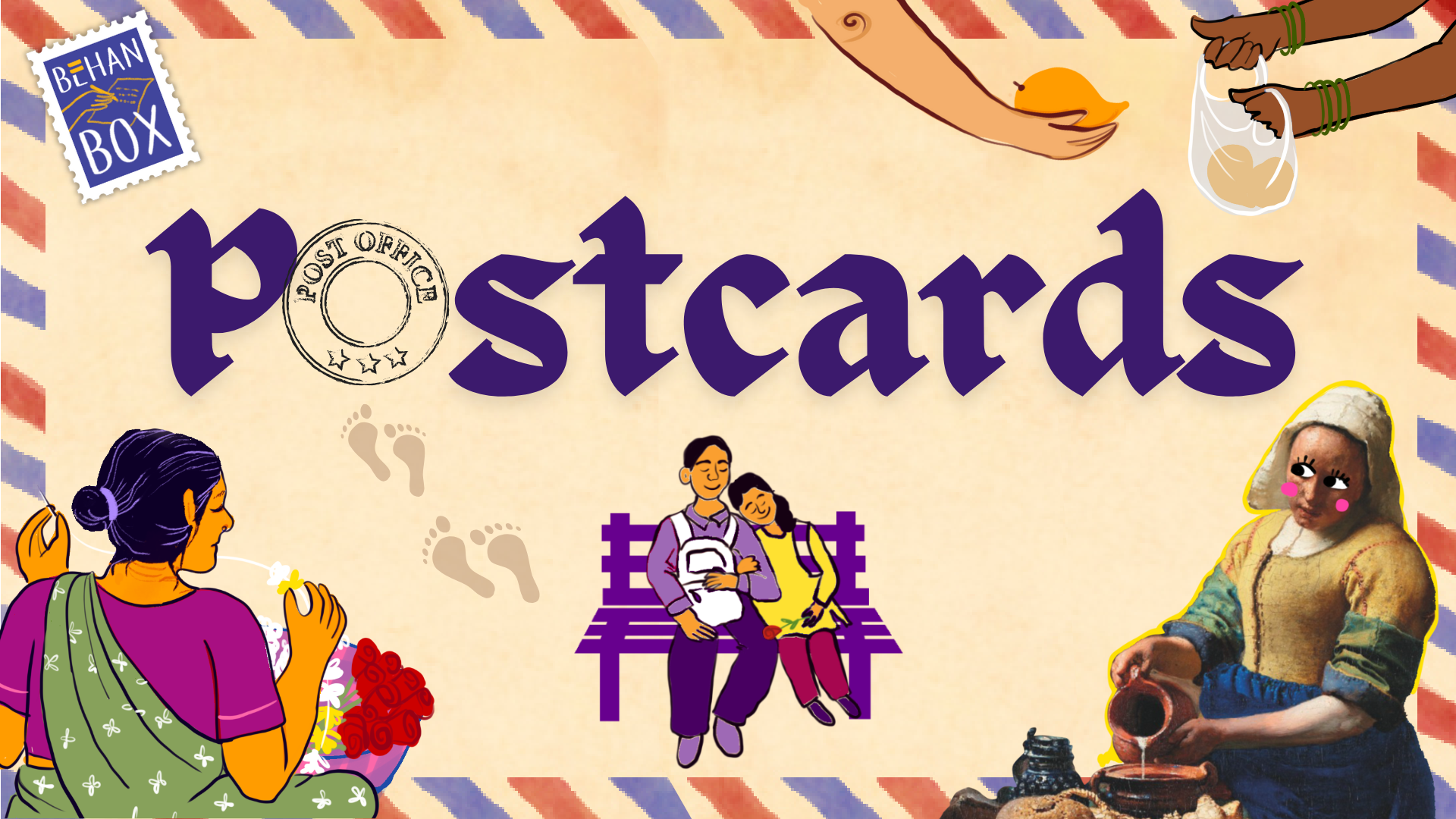
Dear reader, we write to you about the people, places, and ideas that brought team BehanBox joy this month. One postcard, every month.
A Workout Party in Chennai With Barbells and Brownies
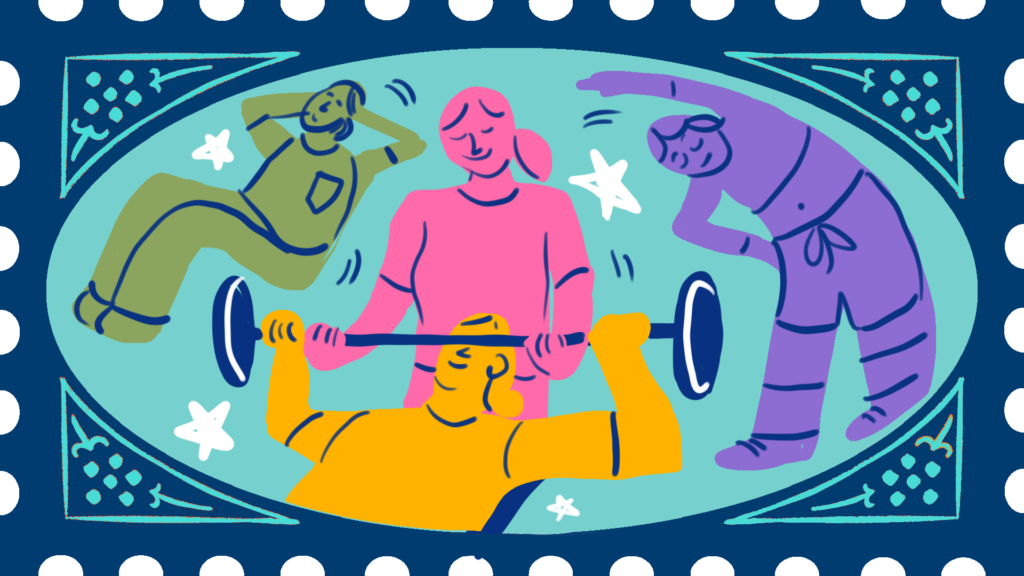
On the first Sunday of May, around 50 women gathered at Ladies Club, a gym in Chennai. We weren’t there just to lift weight, we were there for a ‘deadlift potluck party’ to celebrate the gym’s first anniversary.
Usually, gym clothes, ponytails, and coffee define our mornings. But that day, we dressed up in sarees, sundresses, skirts and jeans, sneakers and jhumkas, and wore glitter makeup, kajal, lipstick and bindi. Tables overflowed with peanut butter sandwiches, cakes, brownies, kebabs, biryani, chips and dip. And in this riot of colour, food, and sweat, almost all of us lifted heavier than we thought possible.
That day reminded me that strength doesn’t have to look serious. It can look like a community, being seen, cheered on and showing up in a city that doesn’t always make space for women – with barbells and fierce affection. Our coach has built something rare: a women’s-only gym where we move for ourselves. There’s no talk of weight loss and no gaze that makes you shrink. There’s mobility, discipline, rest, and joy. There are homemakers here and also entrepreneurs, designers, readers, writers, mothers; 20 -somethings and 60-somethings — sometimes even 8-somethings. Age doesn’t erase belonging here. It is a place where we can be loud, messy, determined, while being reminded of what it means to inhabit our bodies with pride.
We left with our stomachs full — with joy, with food. This wasn’t just a workout. It was a quiet revolt. Whatever else life might throw at us, Ladies Club is our sanctuary. Our place to remember: we are strong. And we are never lifting alone.
Anannya Parekh
A Healthy Dose of PDA – Park Displays of Affection
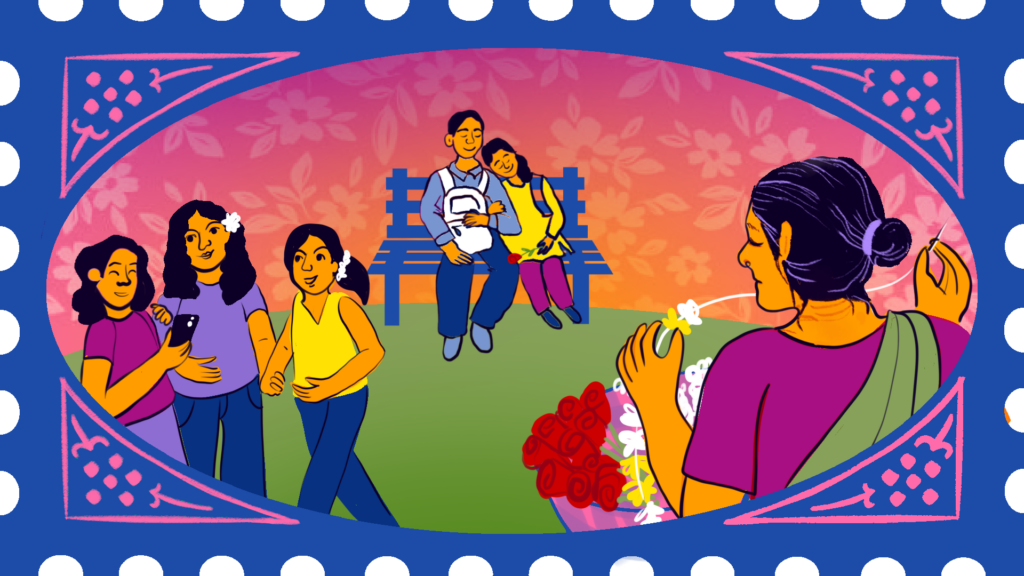
A few years ago, my father after watching Alfred Hitchcock’s Rear Window deemed me Jeff, a protagonist who watches people with binoculars. My life has yet to play out like a Hitchcock film but it is no secret that I enjoy people-watching, especially as they live and love freely.
Our house in western Chennai overlooks a narrow park, beyond the large yellow flame-tree, and it houses species of all kinds. A gang of frogs, a slide that resembles the Leaning Tower of Pisa, cracked pavements bursting with weeds, and the object of my daily desire — a cracked green bench. Visitors of all kinds frequent this bench: teenagers prepping for exams early in the morning, a woman deftly weaving jasmine muzham to old Tamil tunes, other women springing about in their coloured jogging shoes, a couple working on computers while holding hands as dusk falls. Some are there to steal time away from their rushed lives, some to take refuge from the sweltering heat, others sharing a moment with their companions.
My favourite bench visitors are the ‘college-type’ couples — in search of an uncritical place to express fondness in a language that is all theirs. At a time when our society imposes rules on how, where, and who to love, public spaces can be sneaky arenas where desire and love can play out. James Baldwin always comes to mind: “Love takes off the masks that we fear we cannot live without and know we cannot live within.” Unmasked, in a park, I hope their love freely grows.
Archita Raghu
The Avakayya Ritual Returns
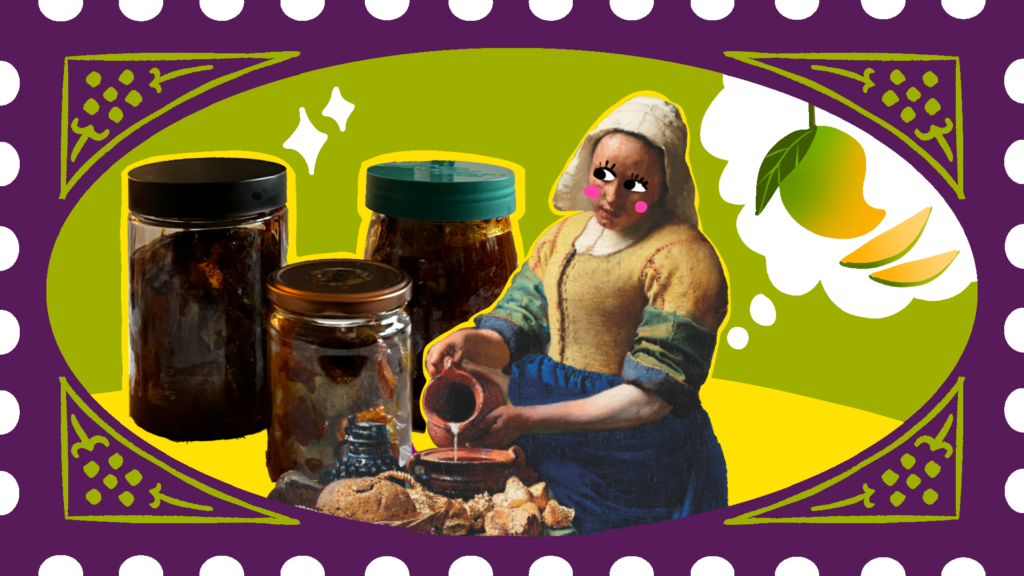
The avakayya (raw mango pickle) season is the hallmark of a Telugu household’s almanac. In March, soon after Ugadi, on an ‘auspicious’ day, matriarchs declare the avakayya season open. Mangoes with the right tartness are procured by the sackloads, freshest hand-pound mustard and chilli powders sourced, most aromatic inguvva (hing) acquired and the gingelly oil from the local oil press ordered.
Avakayyas come in varieties – magaya, thokku, thiyya avakayya, kaya avakayya, and so on. But pachi avakayya, the basic raw mango pickle, is a staple. The entire activity is a fascinating study in gendered labour, intra-family dynamics, care, community, caste and commerce – a social history waiting to be written.
This year I chose to make my own. When you live in a grey, western European country, the auspicious day is one with abundant sunshine. For, damp and pickle are foes. So, on a bright, warm Sunday, my husband Srini and I assembled all the necessary ingredients for this collective enterprise. A flood of memories gushed in – of childhood summers spent at grandparents’, cousins sneaking into our amamma’s puja-cum-pickle store room with big jaadis (urns) covered with old Andhra cotton saris to eat the sun-dried mangoes waiting to be pickled, and my atha (aunt) packing bottles of avakayya that would journey home with us on the Bokaro-Alleppy express and more.
Srini used his elbow grease to mix the pickle, dark brown in colour, bottled it and we waited, like kids staring at their science experiment. All the while sharing our childhood memories.
And on day 3, there was oil!
When the oil floats on the top, the colour has turned crimson red, the boisterous individual notes of pungent mustard and sharp chilli have mellowed and sing in harmony, and the heady aroma knocks you off, the pickle is ready to use. You scoop a generous portion of oota (the spice mix enveloping the mango), mix it with hot rice, add a dollop of ghee and a side of venna poosa (fresh white butter). Not for the fainthearted, it demands gut and gumption. Literally. But adjust it to what your gut can tolerate, pop a ball of avakayya annam (rice and pickle), and that right there is your stairway to heaven.
Bhanupriya Rao
Listening to Jyoti Hedge’s Quiet Revolution
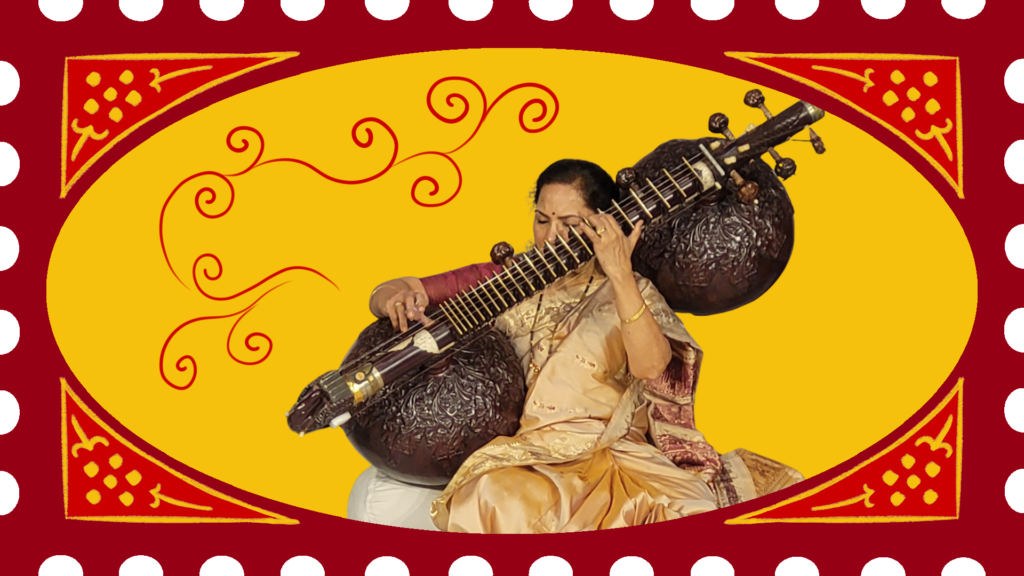
I am not sure where I heard the rudra veena first, likely in a black and white Hindi movie in the decades when classical music enjoyed an easy place in film music. But it is a sound you never forget — magnificent, forlorn with a rare resonance.
There are not that many musicians who play the rudra veena, a taciturn instrument from which you have to wrest music, and every opportunity I get I run to hear it live. Two weeks ago, I heard one of the best in the field — the superb Jyoti Hegde.
On stage, the rather unwieldy instrument with a massive gourd at each end seems to overpower her small frame. But there was nothing fragile about how she played it.
The rudra veena was off-limits for women musicians for centuries — a mix of myth and pseudoscience had made it impossible for women to learn or practice it. The first woman to master it was Jyoti. It was fandom and journalistic curiosity that drove me to interview her six years ago. It had taken her decades of pleading, cajoling with sceptical male gurus — and not a little humiliation — to be initiated into the art, she had recalled.
Once she mastered the art, Jyoti made sure that she pulled more women into mastering the instrument. And if festivals now routinely feature young women on the rudra veena, much of the credit goes to Jyoti.
Jyoti is something of a recluse, happy to run an organic farm in Sirsi in Karnataka as she hones her art. She believes that her practice is spiritual, not a thing of entertainment. Spiritualism is now so much a part of the new age babble that the word leaves me cold. But Jyoti’s music quietens and stirs me at the same time and I think to myself — maybe she has a point.
Malini Nair
Celebrating Karl Marx in Dharavi
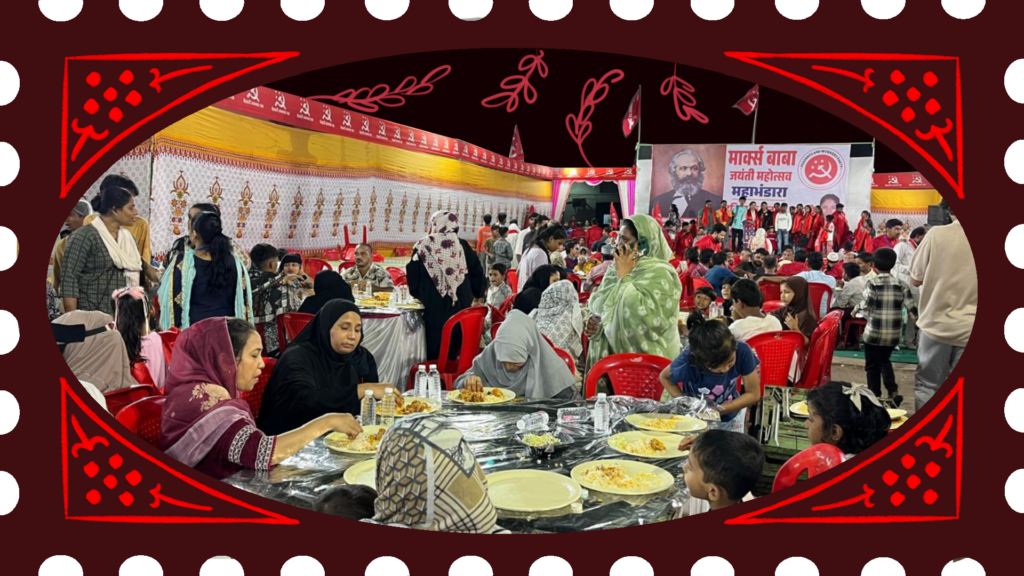
It was May 5. At the PMG colony premises in Dharavi, celebrations are on for the birth anniversary of Karl Marx. His image occupied the left corner of a stage bedecked with flowers.
A young activist, Samya Korde, had organized a bhandara to celebrate Marx’s legacy. A bhandara is a community meal, where people get together and bond over food. This was nothing like the public lectures, seminars and conferences that celebrate the life of a revolutionary leader. Close to 15,000 people – across caste and class, communities and gender – came together for the evening. Young people from the revolutionary band, Jagar Kala Manch, sang and in between, Samya spoke about Marx’s life and work in simple Hindi or bolchal ki bhasha.
The dining tables at the bhandara were heaving with delicious food – biryanis, raita, and sheera (a halwa). I relished every bite as I caught up with the participants.
I thought back later on how the event redefined the idea of a bhandara. Usually it is a religious gathering held by devotees where people come to offer prayers, perform havan, read the scriptures, cook collectively, and share a meal. It is an idea that dates back to Kabir and has become a part of Maharashtra’s popular culture. I loved how Samya reclaimed the idea to enlighten Dharavi’s working class about Marxism – not through a reading of Das Kapital, but through a shared meal.
Priyanka Tupe
Remembering Peacock Window
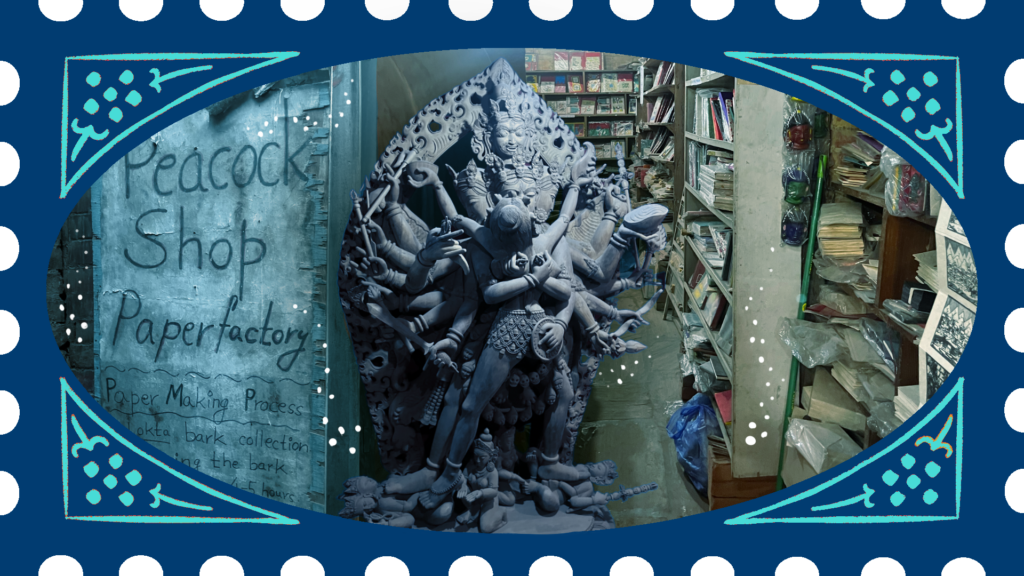
This story started out as a tragedy borne out of my clumsiness, but has turned into a serendipitous drama. It is spread across three weeks and involves a 40-year-old paper factory and some memorabilia lost and found.
I was in Kathmandu for a fellowship last month, and some of us decided to spend an evening in Bhaktapur, a neighbouring city. After we visited its known sights, a Nepali colleague, friend and also our designated tour guide, led us to Peacock Window, a small alley with peacocks carved into lattice windows. Tucked into a corner was a 40-year-old paper factory. Dusty and smelling like old parchments, it was full of postcards, diaries and maps. The owners have lived their full lives there, before and after the 2015 earthquake that devastated parts of this township.
They showed us the basement where they produced their own lokta paper – a sturdy, handmade sheet indigenous to Nepal used for government documents and important records. They also build intricate, magnificent sculptures of mythological Hindu figures. One was of Kalacakra and his female partner Vishwamata, representing the knowledge that leads to spiritual liberation. “We would never sell it,” the owner asserted. None of these sculptures were for public view – these figures carved from wood and stone sat in their basement.
From the shop, I picked two bookmarks, one postcard, one diary, and two drawings of Durbar Square, one in Bhaktapur and one in Kathmandu. Lore has it these plazas were the centers of royal power and life, and kings competed on their lavishness and design. I wanted to carry these stories home but I misplaced the souvenirs the same day. But my friend found them in her luggage two weeks later, and I’m happy to report that they are now in my possession. The first thing I did: write on the handmade sheets of that diary about the paper factory.
Saumya Kalia
Of Community Markets And Random Acts of Kindness
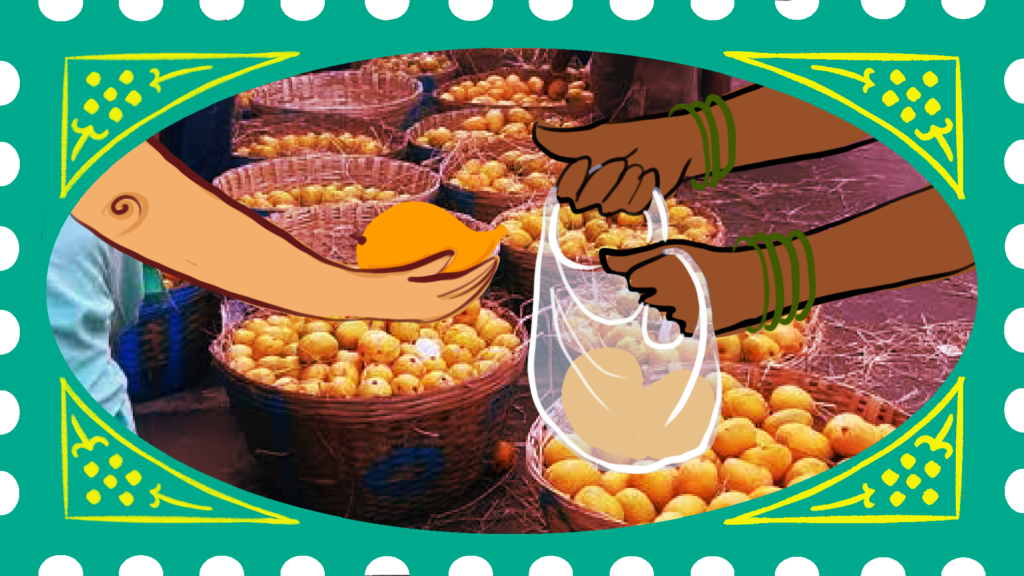
Ever since the mango season began, I have been travelling to the Mapusa market twice a week to get the tastiest and plumpest Mankurad mangoes. While returning from each visit, I had the widest smile on my face, not just because of the mangoes.
Mapusa has the first planned market in Goa, built in 1960. The city even gets its name from the market, believed to originate from ‘Maap’, Konkani for ‘measure’. While the markets began as Friday markets, it is now open every day, except Sundays. The market has everything one needs–fresh fish, dried fish, vegetables, fruits, spices, meat, Goan pork sausages, utensil shops, clothes, mobile and electronic repair shops. But what I found there the most was warmth.
As someone who has lived in one building all her life, I grew up going to the same shops and vendors, all of whom inevitably became ‘uncles’ and ‘aunties’. When I was a child, one of my tasks was to buy milk in the evening from the shop opposite my building. A couple of times, I stumbled and spilt the milk. My first instinct was to not go to my parents, but to the milk vendor who kindly gave me another packet without charging for it. This meant an escape from being yelled at by my parents. When I started living for long stretches in Goa, it was not just my home that I missed but also all these caring people.
And for the first time in my new home state, I experienced this warmth. From the electronic-repairs shopkeeper who ordered a special AC remote just for me to women mango vendors who praised my tattoos and gave me extra mangoes, I now feel like I am home.
Shreya Raman
You’re Never Too Old For Children’s Stories
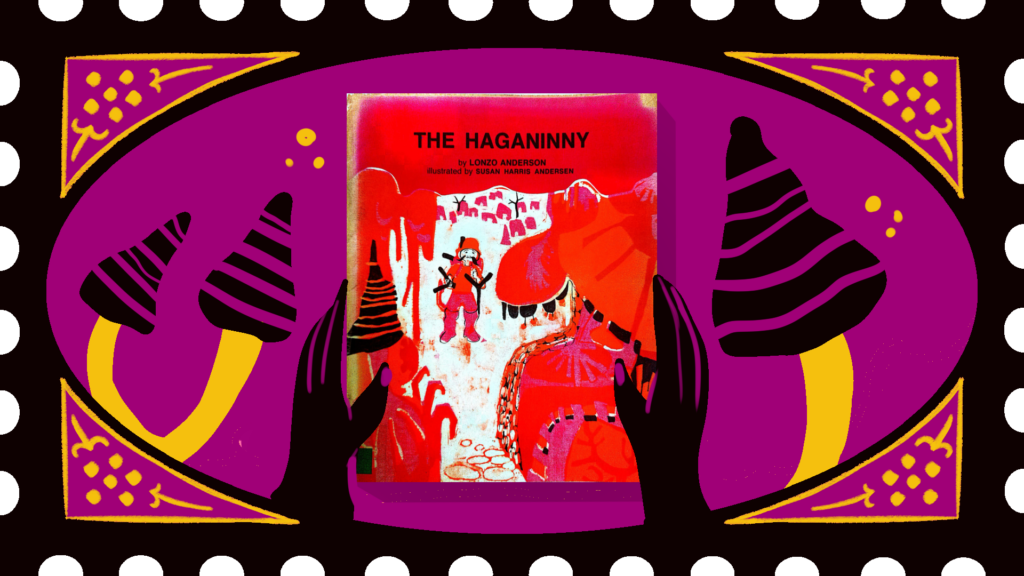
The first time I saw The Haganinny was while casually browsing a somewhat sketchy second-hand book site. The title alone hooked me, it sounds like a monster from a fable used to scare kids into behaving. The book’s pages didn’t follow a clear structure. There was a tiny blob-like boy in orange with a moustache, holding twigs in a surreal pink and orange forest. Everything felt ambiguous, trees that could be rocks, critters you couldn’t quite name.
Written by Lonzo Anderson and illustrated by Susan Harris Anderse, it told a story that stuck. It follows a boy sent into the “zanzles” of Arroom to hunt down the hateful “Haganinny”. Armed with sling shots, he embarks on a bizarre journey through a world filled with danger and nonsense. There’s the man-eating, 67-pack ossicles, with a giant single eye at the very end of the line; shartles suck you down into the ground, phlongs toss you like a basketball, and the booshaboos who strangle you in a hug. The boy gets help from two very different groups of villagers: the Burpus, who eat anything so long as they don’t have to work for it, and the Thuwp, who are constantly in motion, never eating, never sleeping. The only way to scare a Thuwp is to show them someone eating with their mouth instead of their mind.
It’s a world with its own logic, systems, and characters that feel oddly close to home. By the end, they all tear their way out from the haganinny’s stomach and cook it into a feast.
Unlike most children’s stories that rush to teach you a lesson, this story celebrates the absurd. It reminded me of the silly but unforgettable childhood rhymes we’d sing and the games we’d play as kids like Au Meena Super Seena, Miss Mary, and Aam Chori Chappa Chori. In a way, those moments, full of nonsense and joy, shaped me more than any lesson ever could.
Urvi Sawant
What movie, book, art, sight or sound inspired you this month? Mail us your postcards at contact@behanbox.com. We’ll share your missives with our readers on social media.

Your monthly brain teaser about gender, care, and politics with no perfect answers.
BehanBox readers will know our stance on war: it’s anti-feminist and strengthens only the military industrial complex, and takes away focus from the very tender, complex question of borders and belonging. You could understand our confusion when everyone cheered the selection of two women armed forces officers to the panel of spokespersons for Operation Sindoor. There were several critiques on this decision, none of which were received favourably by vast sections of the internet. So help us make sense of this sentiment:
If women objected to the name ‘Operation Sindoor’, would that make them anti-war or anti-government?
Write to us with your thoughts.
Behan’s Responses
Our last puzzler was a tricky one: Do women feel safe or surveilled under a CCTV camera’s gaze?
One would have to see this gaze from different angles – of safety, surveillance, data privacy, and state machinery – to come up with an adequate answer. Instead we have some interesting stat for you instead that captures the complicated relationship of women’s experience with this intervention:
Nikore Associates conducted consultations across five cities – Delhi NCR, Gurugram, Hyderabad, Bengaluru, and Chennai – and found women largely appreciated CCTVs because they deterred potential offenders and provided evidence if an incident occurs. “The knowledge that their complaints can be substantiated by recorded footage makes women feel more confident that they will be believed by authorities, reducing the fear of being dismissed or blamed during investigations,” economist Mitali Nikore tells us. But the flip side is this: they weren’t as confident if they would be able to access said footage, pointing to a need for proper maintenance and transparent procedures for retrieving recordings.
Want to explore more newsletters? Our weekly digest Behanvox and monthly Postscript invite you, the reader, into our newsroom to understand how the stories you read came to be – from ideation to execution. Subscribe here or visit our Substack channel for more.

We believe everyone deserves equal access to accurate news. Support from our readers enables us to keep our journalism open and free for everyone, all over the world.

